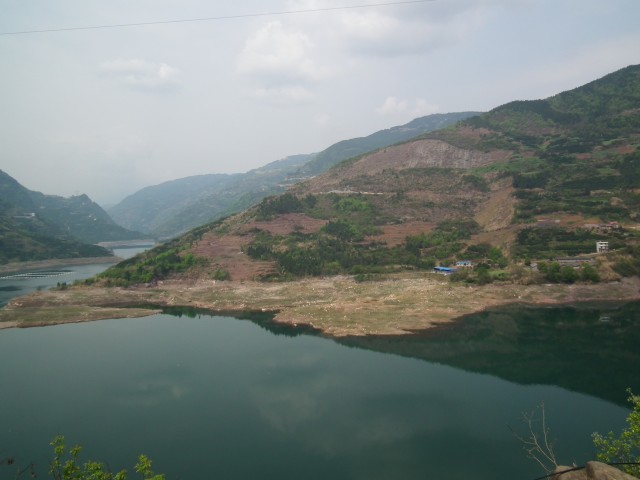25 April 2012
Increasing landslide hazards and the Three Gorges Dam
Posted by Dave Petley
A couple of weeks ago I posted several images from my recent visit to China Three Gorges University, and in particular on landslides on the banks of the reservoir associated with the Three Gorges Dam. Interestingly, last week, whilst I was on vacation, a number of news agencies ran a story about landslide hazards in this area. The spur appears to have been an interview on China National Radio with an official, Liu Yuan, from the Ministry of Land Resources . According to the CRI English report, Liu Yuan indicated that up to 100,000 people living on the banks of the reservoir will need to be relocated over the next three to five years as a result of landslides and bank collapses. The news report notes that he stated that:
“The prospect of controlling or preventing geological disasters in the near future was not promising”
Perhaps most interesting is that Liu Yuan stated that (in the words of the report):
“After the water levels were raised, there were 70 percent more landslides and bank collapses in the area than had been predicted…[and]… an increasing number of monitoring sites were seeing adverse effects from the maximum water level.
Liu indicated that management of rockfalls and landslides is needed at 335 sites, and that there is a need to monitor 5,386 dangerous locations.
Landslides were identified as being a major hazard of the Three Gorges project more than a decade ago, and several years ago I wrote that although a Vaiont style event was unlikely, landslides would probably be a major problem. To give an indication of the concerns, the image below is the Qianjinangping landslide, which I visited on my recent trip. It occurred as the water level was being raised in July 2003. The landslide killed 24 people, destroyed 346 houses and caused the loss of four factories.
Interestingly, the loss of life consisted of 13 people on the slope and 11 fishermen, who were hit by the displacement wave. This is believed to have been up to 30 m high.



 Dave Petley is the Vice-Chancellor of the University of Hull in the United Kingdom. His blog provides commentary and analysis of landslide events occurring worldwide, including the landslides themselves, latest research, and conferences and meetings.
Dave Petley is the Vice-Chancellor of the University of Hull in the United Kingdom. His blog provides commentary and analysis of landslide events occurring worldwide, including the landslides themselves, latest research, and conferences and meetings.
[…] Increasing landslide hazards and the Three Gorges Dam (AGU: The Landslide Blog) Landslides were identified as being a major hazard of the Three Gorges project more than a decade ago, and several years ago I wrote that although a Vaiont style event was unlikely, landslides would probably be a major problem. To give an indication of the concerns, the image below is the Qianjinangping landslide, which I visited on my recent trip. It occurred as the water level was being raised in July 2003. The landslide killed 24 people, destroyed 346 houses and caused the loss of four factories. […]
[…] yet to see the effect on flooding downstream from the dam, but David Petley reported last year on The Landslide Blog that tens of thousands of residents are being forced off the slopes and banks of the reservoir by […]
wow
This is so stupid. Nobody cares about stupid China. !
[…] clear that landslides would be substantial hazard along the banks of the Three Gorges reservoir. It subsequently became clear that the magnitude of the hazard was substantially under-estimated, suc…. However, dispute the publication of case studies it has been difficult to determine the true […]